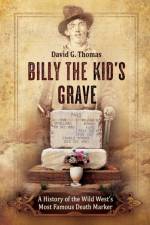av David Thomas
251
Thomas, in the only combat account of World War II Torpedo Bomber pilot ever published, relates his 25 months of service with Torpedo Squadron 4 (VT-4) on the USS RANGER, USS BUNKER HILL, and USS ESSEX. Thomas served in both the Atlantic and Pacific Theaters, and in some of the most important World War II battles. While on the RANGER, he participated in OPERATION LEADER, the most significant attack on Northern Europe by a US carrier during the war. During LEADER, while attacking a freight barge carrying 40 tons of ammunition, Thomas' plane was hit by anti-aircraft fire. Surprisingly, in spite of the considerable engine damage, the plane made it back to the RANGER, where Thomas crash-landed. That landing was his 13th official carrier landing. In the Pacific, Thomas participated in the numerous actions against Japanese targets in the Philippines, including strikes on Ormoc Bay, Cavite, Manilla, Santa Cruz, San Fernando, Lingayen, Mindoro, Clark Field and Aparri. Following these actions, Thomas' squadron made strikes on Formosa, French Indo-China, Saigon, Pescadores, Hainan, Amami O Shima, Iwo Jima, Okinawa, and Japan. The attack on Japan was the first attack on Japan from an aircraft carrier since the "Doolittle Raid." While on the ESSEX, just after Thomas had returned from a strike on Santa Cruz, the ship was hit by a Kamikaze piloted by Yoshinori Yamaguchi, Yoshino Special Attack Corps. Yamaguchi was flying a Yokosuba D4Y3 dive bomber. The Kamikaze attack killed 16 crewman and wounded 44. Returning from a strike on Hainan, off the Chinese coast, Thomas' plane ran out of fuel. After a harrowing water landing, Thomas and squadron photographer Montague succeeded in inflating and launching one rubber boat and his crewman Gress another. After a long day in pre-Typhoon weather with 40 foot swells, the three were rescued by the USS SULLIVANS. In recounting the events in this book, Thomas draws upon his daily journal, his letters home, and extensive interviews and research conducted over 40 years with fellow pilots and crewman. The book cites 20 interviews and 5 combat journals, and contains 209 photos documenting the ships, planes, men, and combat actions of Torpedo Squadron 4. Many of the photographs were collected by Thomas during the war and include gun photo shots, recon photos, and, remarkably, a picture of the tail of Thomas' Torpedo plane as it sinks in the China Sea following his water crash landing.









